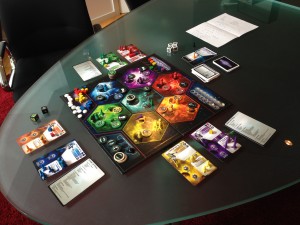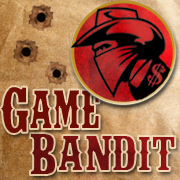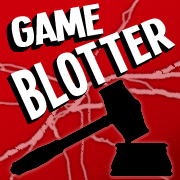Welcome to Purple Pawn, covering games played around the world by billions of people every day.
 Yesterday I got a chance to sit down with designer Darrin Horbal and play the prototype of his new design, Starguard. The game is a sci-fi cooperative game for 1-6 players, and has the players working together to protect themselves from an alien excursion while trying to take back a central system that the aliens have taken over. While the game and it’s visual design aren’t finished, this was one great looking prototype. Everything felt so polished, right from the very start.
Yesterday I got a chance to sit down with designer Darrin Horbal and play the prototype of his new design, Starguard. The game is a sci-fi cooperative game for 1-6 players, and has the players working together to protect themselves from an alien excursion while trying to take back a central system that the aliens have taken over. While the game and it’s visual design aren’t finished, this was one great looking prototype. Everything felt so polished, right from the very start.
One of the first, and coolest, mechanics of the game is encounter right from the start. No matter how many players there are, all 6 player systems will be used during play. That means in a 2-player game, each player will play 3 systems. 3-player games will see each player playing 2 systems, etc… Another great mechanic is that there’s no defined play order when the game starts. Players choose the order in which each system will take their turn, and place tokens on the top of the board to set this order in stone for the rest of the game. This works out well when players are controlling multiple systems and need to keep track of which of their systems plays at what time. Once this is decided, each system starts with their hero, 1 colony and 1 ship on their home world. Systems are made up of a home world, a 1st planet, and a 2nd planet. More on this later.
 Each system has a player card that tracks a player’s resources, boosts, orbital defense token, per-game token, and special powers. Each player has 2 special powers: one that can be used every turn, and one per-game. The previously mentioned per-game token allows a player to track if they’ve used that power or not during the course of play. Players’ unbuilt ships and colonies are stored on the bottom of the card. Each card also states what resources a player produces each turn. The Red, Yellow, and Blue players produce 2 of their respective color at the start of their turn. The Purple, Orange, and Green player produce 1 of each color that combine to make their color. Resources are used to buy boosts, build colonies, and help build each player’s orbital defense cannon.
Each system has a player card that tracks a player’s resources, boosts, orbital defense token, per-game token, and special powers. Each player has 2 special powers: one that can be used every turn, and one per-game. The previously mentioned per-game token allows a player to track if they’ve used that power or not during the course of play. Players’ unbuilt ships and colonies are stored on the bottom of the card. Each card also states what resources a player produces each turn. The Red, Yellow, and Blue players produce 2 of their respective color at the start of their turn. The Purple, Orange, and Green player produce 1 of each color that combine to make their color. Resources are used to buy boosts, build colonies, and help build each player’s orbital defense cannon.
The goal of the game seems simple enough. Score 7 points before the enemy alien race does. I’ll let you in on a little secret. It’s by no means that simple.
The players earn points by building their orbital defense canons on their home worlds. That, alone, is enough to earn you 6 points if you can get them all built. Points are also earned by liberating and holding planets in the central sector. That means you not only have to flush the aliens off a planet, but your ship must survive to occupy the empty planet afterwards. The aliens, on the other hand, have a bit of an easier time scoring points. At any time when a Mothership enters the board they get 1 point for every ship that came before it on the board. Aliens also get points when they “overflow” from a planet to a different one. This happens when a planet that already has 2 aliens on it receives a 3rd invasion. This new invader spills over to the planet below it in this order: 2 -1 – home world.
Each turn players will collect resources, refresh ships exhausted on their previous turn, build new ships on each of their colonies, take actions using their resources and boosts (which are purchased using resources), and combat aliens. Combat is resolved through die rolls. Roll the color of the alien to destroy it and lose your ship. Roll more than 1 of the color and the alien is defeated and your ship stays in play. Players can also bank boosts and ships to the Starguard card to use to remove alien invasions from planet, remove motherships, and even build a strike ship that can prevent bad cards from effecting the board when they’re drawn. Once a player’s actions have been taken, they draw a card and resolve it. After that it’s time for a BTR, or Bad Time Roll. The player rolls the 2 dice and places an alien on the planet number in the system the dice show. There’s a bit more depth in there with heroes, color bonuses for battle, special powers, and more, but I just wanted to give a basic overview of play. The game ends when either the aliens or the players reach 7 points.
The game I played was with 3 players each playing 2 systems. We had a very bad start with the green system becoming overrun pretty quickly, and the aliens racking up 5 points in very short order. There came a point where very specific moves kept us alive, just barely, for around 20 minutes while the aliens scored another point. We slowly moved our score track up, and with careful use of special powers we held off the aliens from pulling that last point out of the bag. The final move was pulled off by Darrin, himself. He needed to defeat one alien on a center planet to score our last point. Unfortunately his die roll meant he’d lose his ship, thus we wouldn’t occupy the planet. Thankfully he had a card from earlier that let him re-roll one combat die. With that last roll, we pulled off a victory. A good thing, too. We wouldn’t have survived the next turn.
Darrin is currently putting the last touches on the game, and will then be shopping it around. After the play we had, I don’t feel like he’ll have too much trouble finding someone to publish it. It’s solid, intense, and a great time. Here’s to hoping we’ll see this game crossed off the Unpublished list soon.
Unpublished is a series about unpublished games. Games in this series are in various states of completion. Game mechanics, art, name, etc… are subject to change as development progresses.
No Comments
Sorry, the comment form is closed at this time.
Trending
- Massdrop.com
- Oh the Irony—Illuminati Card Game Continues to Inspire Conspiracy Theorists
- Home
- Footprints, an Educational Ecology Game
- USPS Adds Board Game Flat Rate Box
- Baila, the Estonian Drinking Card Game
- Crystal Caste Wins Dice Patent Suit Against Hasbro
- Mirror Game, Red and Blue
- Hasbro and Mattel Merger?
- Are Board Games Dangerous?
Archives
Most Popular Articles
- Oh the Irony—Illuminati Card Game Continues to Inspire Conspiracy Theorists
- The 20 Most Valuable Vintage Board Games
- The Truth About Dominoes On Sunday in Alabama
- Sequence Game, and Variants
- USPS Adds Board Game Flat Rate Box
- Baila, the Estonian Drinking Card Game
- The 13 Most Popular Dice Games
- Are Board Games Dangerous?
- Guess Who? The Naked Version
- What Happened to the Jewel Royale Chess Set?
Recent Posts
- Toy Fair 2019—Breaking Games
- Talisman Kingdom Hearts Edition
- Toy Fair 2019—Winning Moves
- Toy Fair 2019—Games Workshop
- Toy Fair 2019—Star Wars Lightsaber Academy
- Toy Fair 2019—Stranger Things Games
- Toy Fair 2019—HABA
- Licensing Roundup
- Game Bandit
- 2018 A Difficult Year For Hasbro But Not For D&D Or MtG
Recent Comments
- on Toy Fair 2019—Winning Moves
- on Game Bandit
- on Second Look—Dungeons & Dragons Waterdeep Dragon Heist
- on Crowdfunding Highlights
- on Beyblade SlingShock
- on Game Bandit
- on Game Bandit
- on Watch This Game!, the Board Game Review Board Game
- on Second Look—Vampire: The Masquerade 5th Edition
- on Palladium Books Loses Robotech IP License, Cancels Five-Year-Overdue Robotech RPG Tactics Kickstarter




